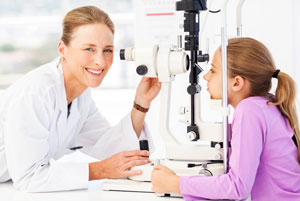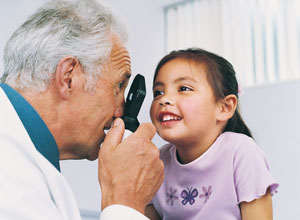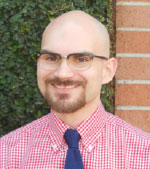Recently my friend Melanie sent me a text asking where I’d gotten my glasses. I’m currently wearing—yes, it’s true, I’m sorry—the same pair I’ve worn for three years now, and she’d been admiring them for a bit, and decided they might be the pair for her. After all, weren’t they from that website that donates a pair of frames for every one you buy? Aesthetics aside, that was what really sold her—not only would she get a style she liked, but it would also help someone else, and she likes to help charitable organizations whenever possible.
Now, I’m not actually wearing a pair of ‘those folks’ glasses—mine are from Clearvision and just happen to be remarkably similar—but our conversation did get me thinking. Not to sound like too much of a cheerleader for my own generation, but despite the stereotypes, numerous recent studies have noted that Millennials are an exceptionally generous cohort. A December 2015 Washington Post article pointed out that, in the previous year, a whopping 84% of Millennials made charitable donations, with the average yearly expenditure being $481; 70% of Millennials, meanwhile, spent time actually volunteering. Other statistics that accurately predict another millennial trend are that, like my friend, we’re more likely to favor one business over another if part of our money goes to a charitable cause. We recognize the need for commerce, sure, but if the opportunity arises to get a loaf of that sweet, sweet artisanal sourdough and help feed third-world war-orphans, well, everyone wins, don’t we?

This caused me to think about the offers to donate to the needy made by particular nameless online opticals made several years ago, and that they’ve been exploiting the heck out of ever since. Sure, their advertisements are riddled with cheap shots at brick and mortar and more than a bit of angsty-riling, but deep down they’re appealing to a fundamentally good part of their core audience’s nature – helping people.
 So, shall we do the same?
So, shall we do the same?
Online opticals may be able to throw pairs of inexpensively manufactured glasses at the needy, but ultimately, supplying a product is all they can do. As eye care professionals, we’re in the unique position of playing a greater role than just dispensing or shipping glasses to those who need it. We can actually apply our professional expertise and experience — especially in the case of ODs and MDs. We can, selectively, supply our professional experience and wisdom to individuals whose problems don’t begin and end with popping on a pair of glasses. We’re in the perfect position to reach out to our communities and the people in them, supplying our time, wisdom, and resources to help them improve our own part of the world, and show anyone watching that we care. The question is: Are we?
A perfect starting point is in our schools. Consider – The Multi-Ethnic Pediatric Eye Disease Study (MEPEDS), conducted in Los Angeles from 2002-2012. The study found that African American and Hispanic children are at a higher risk for amblyopia and astigmatism than children of other races or ethnicities (17% for Hispanic children and 12.7% for African American children, vs. 6% for Caucasian children). However, due to a variety of socioeconomic factors, they also receive poorer vision care and are less likely to receive early childhood vision screenings. I’ve seen this phenomenon firsthand: My wife works for a charter school whose population is predominantly African-American and Hispanic, and it isn’t unusual for her to have to move students to the front of the class in order to see the board, or find students with their faces inches from their paper, all because they lack the proper visual correction to see properly. In many cases, her students are wearing glasses that they received when they were in elementary or middle school and which, in addition to holding outdated prescriptions, are so small they barely fit their faces anymore. A vision screening for them could be, quite literally, a life changer—and we’re in the perfect position to help make that change.

I’ve always loved glasses because of the positive impact they have on the world. They help us see. They help us interact with one another. They help us definite our faces, our appearance, and ultimately, ourselves. I’ve said it before, but I’d like, in the coming years, to see the reach of the optical world extend beyond one doctor in one office helping one patient at a time. I’d love to be able to log online tomorrow and see dozens of doctors, opticians, and others in the eyewear field using their knowledge and skills to positively impact dozens of children, veterans, homeless persons, the elderly… All those who want, need and can benefit. Whether we realize it or not, online optical has thrown down the gauntlet. By making donations, they are tacitly sending the message to consumers, “we’re doing this. The other guy isn’t.” Let’s change that—not just for ourselves, but for the world. We can make a far bigger, far-reaching impact than an anonymous online outfit could ever hope to.
The question now is: Will we?

Preston Fassel was born in Houston, Texas and grew up between St. Charles, Missouri and Broken Arrow, Okla.
In 2009, Preston graduated Summa Cum Laude with a degree in Liberal Arts. In 2011, he graduated Cum Laude from Sam Houston State University with a Bachelor's of Science.
Preston currently works as an Optician in the Houston area. His interest in the history of eyewear goes back to his time in high school, when he developed an interest in all things vintage.
In addition to his writing for The 20/20 Opticians Handbook and 20/20 Magazine, Preston is a featured writer for Rue Morgue Magazine, where he reviews of horror and science-fiction DVDs. His fiction writing has been featured three times in Swirl magazine, the literary arts journal of Lone Star College and Montgomery County. He is the author of the definitive work on the life of British horror actress Vanessa Howard, Remembering Vanessa, which appeared in the Spring 2014 edition of Screem Magazine.













